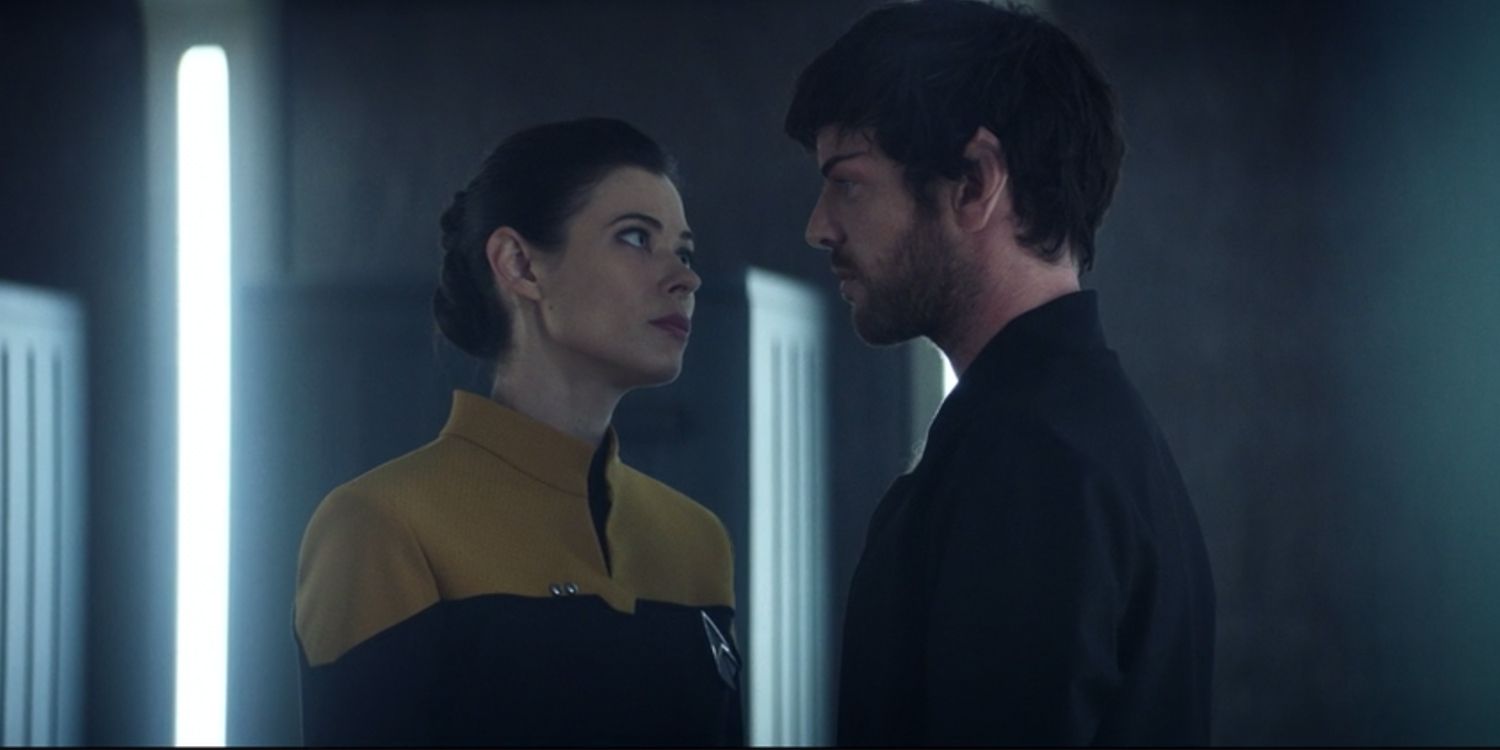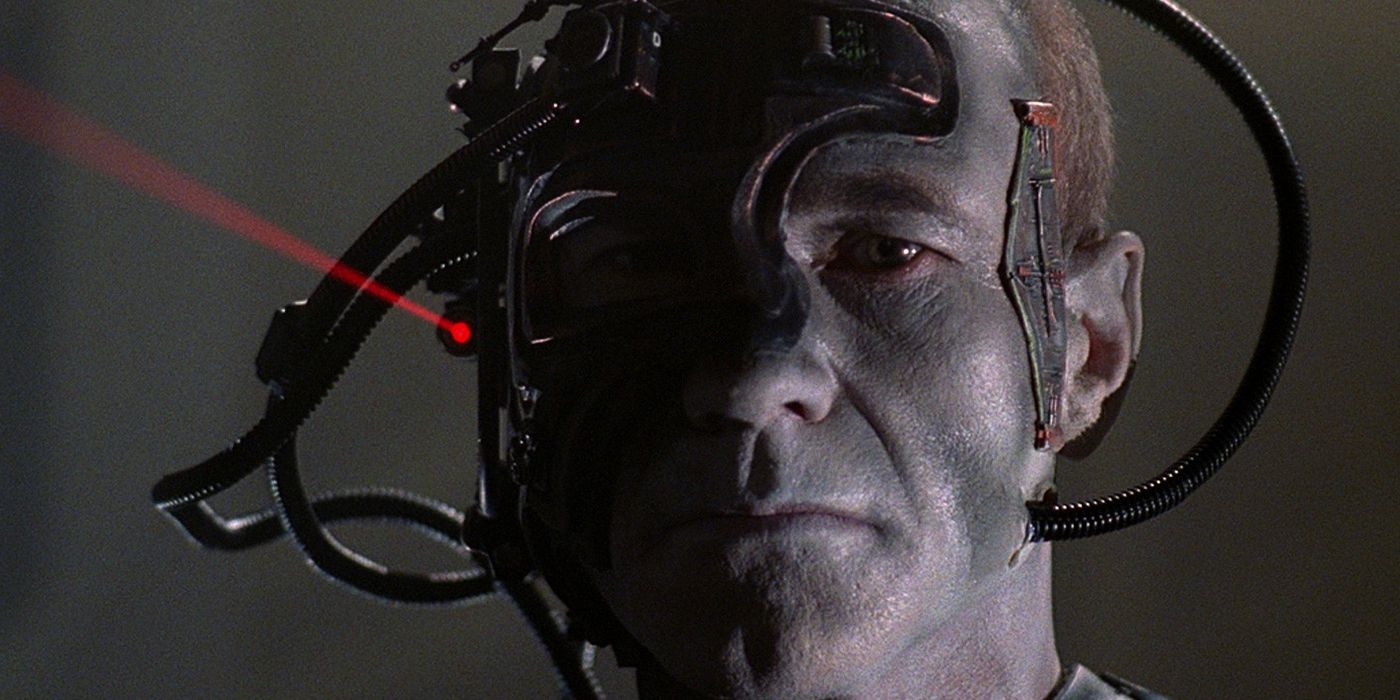WARNING: The following contains spoilers for Season 1, Episode 2 of Star Trek: Picard, "Maps and Legends," now streaming on CBS All Access.
In “Maps and Legends,” the second episode of Star Trek: Picard, the Romulans have several aspects of their society retconned that could have major ramifications for Star Trek going forward. Chief among them is a deep-seated hatred of synthetic lifeforms that apparently influences every aspect of Romulan life down to the way they code their technology.
We also learn of a conspiracy within Romulan society so secretive that most Romulans are completely ignorant or dismissive of its existence. This cabal, known as the Zhat Vash, is a group dedicated to keeping a secret shame in the Romulans’ past. The group is so feared for its willingness to kill that Zhat Vash is another term for the dead, the “only reliable keepers of secrets” from a Romulan’s perspective. They operate without regard for treaty or jurisdiction, doing whatever they deem necessary to ensure their secret remains safe.
Jean-Luc, like viewers, was completely sideswiped by the revelation of both the Romulan’s anti-synthetic sentiments and the existence of the Zhat Vash. However Laris and Zhaban are quick to point out that Romulans are synonymous with secrets, it’s in the fiber of their being. In fact, they mock the Federation for referring to the Tal Shiar as the Romulan secret police, calling the distinction “redundant.”
So, what is this secret? As the episode progresses it’s made clear that the Zhat Vash are very real, but we aren’t given any sort of answer since they are mostly regarded as boogeymen. By examining the sparse information at hand, there are enough threads we can connect to reveal a possible motive that might be as devastating as the Zhat Vash fear.
The show has made the role of artificial life a central theme, so the Romulans’ hatred of synthetics is no coincidence. Neither is the introduction of the Zhat Vash and the looming secret which could “break a person’s mind.” While it’s true we are given no concrete answers, the Romulans may have revealed themselves both through action and omission.
The Zhat Vash have gone out of their way to infiltrate the Federation, compromising Starfleet at its highest levels. They orchestrated the Mars incident to foment a fear and hatred of synthetics which would further their agenda. They are desperate to root out and destroy synthetic life, with Dahj’s murder revealed to be a back-up plan. The Zhat Vash wanted to track her, hoping she would lead them to a “nest.” That is exactly why Narek, an agent for the Zhat Vash, has seduced Soji. It’s clear that the cabal is willing to go to incredible lengths to achieve their goals.
The scene where Soji assists a Romulan scientist harvest Borg cybernetics takes on a new context with the Zhat Vash’s zeal against synthetics in mind. On the surface, the exchange highlights Soji’s empathetic nature in contrast to her callous Romulan boss. The scientist refers to the organic remains of the Borg the “Nameless Ones,” which seems conspicuous for a people that keep secrets. While quick to show them disdain, the Romulans are also eager to scavenge all they can from the Borg cube. They show a possessiveness over the tech that could be misconstrued as simple greed, but perhaps it’s something more.
The secret the Zhat Vash kill to protect could be that the Romulans are responsible for the creation of the Borg.
Since their introduction into Star Trek, the Borg have been a plague, easily seen by all sentient races as the greatest threat to their continued existence. If the Romulans had some part in the birth of the Borg, that revelation would be an embarrassment that shakes Romulan civilization to its core. A shame of this magnitude could prove too much for the Romulans’ overinflated pride, possibly enough to drive them mad as Laris suggests.
There are a few possible ways this could have played out. The Borg could have been a creation of the Romulans -- possibly born from another race they experimented on, or perhaps through cloning. The Romulans do have a history with cloning, attempting to destroy Picard with a younger clone of himself named Shinzon in the last TNG movie, Nemesis. Their creations could have grown beyond their control and as a result, the Romulans swept the Borg under the rug, banning artificial life.
It could be even more personal than that. The Nameless Ones might have once been Romulans themselves. It’s entirely possible that long in the Romulans’ past there was an ideological divide. One faction embraced cybernetics and synthetic life, and the other opposed it. A civil war between the two could have resulted in the Borgs’ exile and divergence from their Romulan siblings, as well as establishing the Romulans’ hatred of synthetics. These theories would explain both the Zhat Vashs’ actions and the sense of propriety the Romulans seem to have over Borg tech.
If the Zhat Vash are hunting down synthetics to cover a secret and the entire Romulan people possess an innate hatred of synthetics, it stands to reason that those two facts are connected. There are still too many missing pieces to form a solution to the puzzle Picard is presenting. But if the Borg and Romulans are as intertwined as we are being led to believe, Star Trek fans should brace themselves for a massive shift in the franchise’s lore.
Star Trek: Picard stars Patrick Stewart, Alison Pill, Michelle Hurd, Evan Evagora, Isa Briones, Santiago Cabrera, and Harry Treadaway. New episodes of the series premiere every Thursday on CBS All Access.



